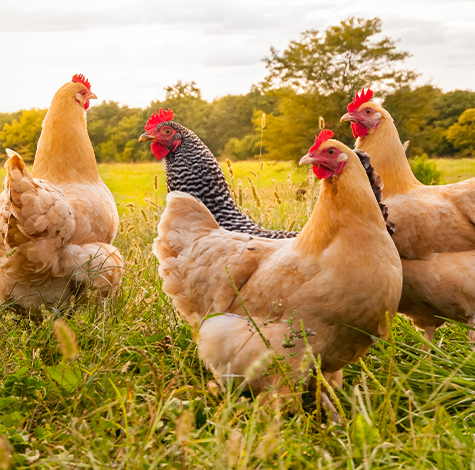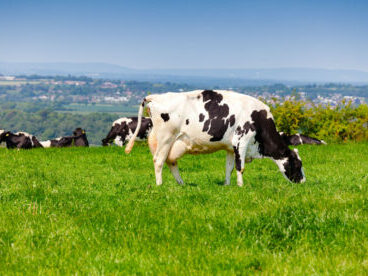Dairy cows not only have the potential to experience heat stress but can also be affected by the cold. Fortunately, there are ways to minimise the effects of cold stress on your herd this Winter.
With temperatures dropping to as low as -15 ̊C. in some parts of the country earlier this year, the agricultural industry is waiting anxiously for another cold winter ahead.
For a cow, thermoneutrality ranges from 0C- 16 ̊C., R&D shows when temperatures drop below -4 ̊C. dairy cattle are at risk of cold stress. Cold stress occurs when a cow’s metabolic processes and winter coat do not keep it warm enough to maintain core body temperature.
With a thick winter coat, a cow’s lower critical temperature is around -7 ̊C. However, dairy cows can tolerate temperatures well below zero if they have good body condition and are provided with sufficient shelter, fresh water, and adequate nutrition.
When temperatures drop, a cow’s maintenance energy requirements increase, meaning that extra dietary energy must be supplied to help maintain body temperature and metabolic processes and maximum milk production. As a result, changes should be made to her environment and rations to ensure adequate energy is fed.
Symptoms of cold stress
Cold stress can impact cows in different ways and can also be difficult to recognise. Some symptoms to look for include altered behaviour, huddling, reduced body condition score, reduced water intake, and decreased milk production.
Ways to prevent cold stress
Shelter: Ensuring your herd can shelter from bad weather and keep their coats dry is vital to reducing the effects of cold stress. Sufficient shelter should be provided with some airflow still available to prevent respiratory illnesses. Clean, deep, dry bedding should also be provided regularly to provide insulation and maintain blood flow to the udder for milk production.
Nutrition: A cow’s maintenance energy requirements increase during cold weather and with partitioning away from lactation. The situation is acerbated with potential reduced DMI as a result of decreased water intake. This means a more energy-dense ration should be fed in order to optimise production. The extra energy is best supplied via specific fatty acids and glucose.
Water: The intake of water is extremely important when it comes to preventing cold stress. Cattle experiencing cold stress typically drink less water. It is advisable to regularly check and ensure the water tank on the farm is not frozen.
Herd health: Not all cows are affected by cold stress in the same way. Transition cows, older cows and cows that have previously been treated for poor health can be the most susceptible to cold stress.
How UFAC can help
With grass supply declining during the winter months, now is the time to increase your ration energy density. This can be achieved by increasing the quantity of fat supplementation to supply the essential fatty acids along with glucogenic energy and buffer your herd needs. We recommend feeding your herd dynalac and glyco-buf to maintain energy requirements this winter.
dynalac
A proven fat supplement for high-yielding dairy cows. dynalac’s unique combination of fatty acids helps meet the energy needs of milking cows while supplying the specific nutrients required for optimum performance at a time when intakes are suppressed.
glyco-buf
Designed to improve rumen health in high-yielding, transition and early lactation cows. glyco-buf improves energy supply, leading to improved DMI, lower body condition loss, fewer metabolic disorders and increased yields.
Interested in learning more about UFAC products? Fill out the form below, and a member of our team will be in touch with more information, or contact our Regional Business Managers directly.
Mark Townsend
M: 07788 294 539
South West and Wales
Richard Lapthorne
M: 07788 963 487
North England and Scotland
James Hastings-Molyneux
M: 07538 763 832
South East and Mildlands


 Back to News
Back to News 



